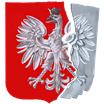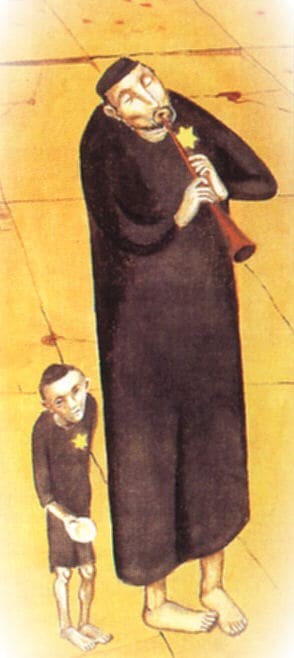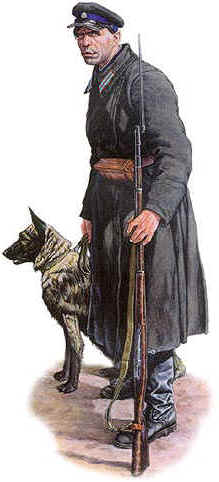Timeline of Events – 1941
World War II – Poland


Vernichtung by J. Krawczyk

Gun Drill on the Piorun

January – Sikorski asks the RAF to bomb Auschwitz to liberate inmates. Polish and Jewish leaders repeat the request through the war, but the Allies will not act, citing military priorities.
February 17 – Father Maximillian Kolbe is arrested by the Germans for writing against Nazism and helping Jewish refugees. Kolbe will give his life in exchange for another prisoner in Auschwitz.
May – Some 500,000 Jews are crowded into the Warsaw Ghetto in terrible conditions.
May 26 – The Polish destroyer Piorun exchanges fire with the German battleship Bismarck and signals its position to the British fleet who succeed in destroying the pride of the German navy.
June 4 – Nazis execute 24 Polish professors in Lwow.
June 14 – Fourth of four mass deportations of Poles to Siberia. Taken are 300,000 of those who avoided previous deportations, and children from summer camps and orphanages.
June 22 – Operation Barbarossa. Hitler invades the USSR, his former ally.
June 22 – 29 – Soviets slaughter prisoners in their cells or on death marches in wake of the Nazi invasion of the USSR. As many as 120,000 people (mostly Poles and Ukrainians but also a few Jews) will be murdered.
June 22 – 28 – In Brygidki Prison, Lwow, the Soviets carry out mass executions. Of 13,000 mostly Polish inmates, all but 600 are executed. About 3,000 are Ukrainians.
June 24 – 2,000 Polish prisoners are marched out of Wilejka prison by several hundred collaborators and the NKVD. Prisoners are shot/bayoneted by their escorts and attacked by German planes. Some 547 prisoners are missing five days later.
June 26 – NKVD machine-guns 100 Polish political prisoners in a gorge near Minsk. The Soviets will blame the Germans for the Tarasowski Wood Massacre. NKVD executions in Krzemieniec jail. Survivor’s Accounts
July – Nachtigall Battalion (Ukrainian Nationalists allied with Nazis) torture and execute 51 professors and 100 Polish students in Lwow after Soviets leave. In the first few days of July, Nachtigall and the SS will murder 3,000 Poles and 6,000 Jews.
July 3 – Stalin announces “scorched earth” policy against German invasion.
July 30 – The Polish Government-in-Exile and Stalin sign an agreement for mutual aid in the war against Hitler, which includes an “amnesty for Polish citizens deprived of freedom on Soviet territory” and the formation of a Polish army under General Wladyslaw Anders, released from a Moscow prison.
August – Polish Gulag survivors and POWs begin trek across USSR to Buzuluk where the Polish Army is being formed. Many will perish en route, including children. Of the 230,000 Polish soldiers deported to the USSR, only 82,000 are still alive. The entire officer corps was executed at Katyn.
August 9 – 12 – Polish Carpathian Brigade defends western section of Tobruk.
August 20 – German seige of Leningrad begins.
August 28 – Over 600,000 Volga Germans are deported by Stalin to Siberia and Kazakhstan.
September – Nazis test Zyklon-B gas in Auschwitz on 250 political prisoners and 600 Soviet POWs.
October 8 – Mass killings begin in Chelmno extermination camp; 360,000 Jews will be gassed.
November 11 – Polish Underground lays flowers and writes anti-German slogans in Warsaw. Involved are 400 juvenile members of Wawer named after the village where 106 were killed by the Nazis.
December 3 – Stalin tells Sikorski that missing Polish officers (secretly murdered on his orders) may have “escaped to Manchuria.”
December 7 – Japanese attack on Pearl Harbour.
December 8 – Wiktor Alter and Henryk Erlich, Polish-Jewish Socialists, are arrested by the Soviets and charged with spying. They will later be executed despite Allied protests.
December 14 – 17 – Polish Carpathian Brigade distinguishes itself at Battle of Gazala in Libya. Later they will fight in Italy with the Polish 2nd Corps.
Christopher Jacek Gladun was born in 1951 and grew up in Canada to where his family emigrated from England as displaced persons. Sadly, Chris died in Toronto in March 2003. He held a diploma in Journalism from the Niagara College and a BA in Polish Language & Literature from the University of Toronto. Chris also acted as interviewer and researcher for the documentary film “Rescued From Death in Siberia”.
This content is now maintained by the Kresy-Siberia Group, which Chris was a charter member of and which is taking his website and his research work forward.